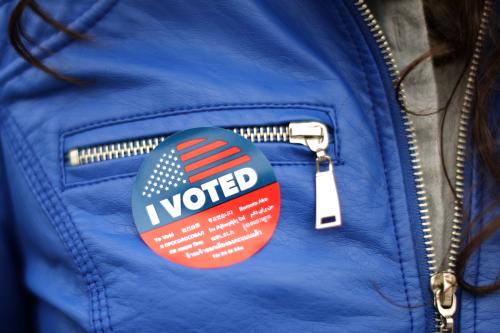 Voting is an integral part of the democratic process. But each election cycle, voter turnout is much lower in the United States than in other parts of the developed world. In the 2016 presidential election, despite seeing historic numbers of voters, the U.S. voter turnout was just 56 percent of eligible voters.
Voting is an integral part of the democratic process. But each election cycle, voter turnout is much lower in the United States than in other parts of the developed world. In the 2016 presidential election, despite seeing historic numbers of voters, the U.S. voter turnout was just 56 percent of eligible voters.
That number drops even further during midterm years. Research suggests that there is a strong relationship between household incomes (or wealth) and voting in the U.S. Simply put, lower income individuals vote proportionately less frequently than their richer counterparts. Additionally, the young are also less likely to vote than older individuals. The intersection of these two groups compounds the problem resulting in even worse voting participation.
The map below shows the voter turnout for the 2014 election by state for voters in the age range 18-28 below the median household incomes. The voter turnout is almost always lower for this group than for their richer counterparts.
What can be done to address these issues?
In a new report, Brookings Rubenstein Fellow Randall Akee and coauthors look at how changes in household income can affect voter behavior.
In 1993, the Great Smoky Mountains Study followed a group of children, comprised of both American Indian and non-American Indian families in rural western North Carolina.
Halfway through the study, a casino opened on the Eastern Cherokee reservation and all adult tribal members—regardless of employment status—were eligible to receive a portion of the profits.
Using publicly available voting records in North Carolina, Akee and coauthors matched the voter behavior for the children in the study from the 2002 election onwards. They find that the children whose families had received cash transfers from the casinos grew up to be more active voters as adults than their counterparts in the survey who did not receive these transfers.
Raising the incomes of America’s poorest families increases children’s voter turnout
Comparing the voting behavior of families receiving cash transfers
An annual increase of approximately $4,700 (in 2000 dollars) increased voter turnout for children from below median household incomes by about 8–20 percentage points as compared to their relatively richer counterparts (who also received the income transfers).
However, no such change in voting behavior was found for the parents of the families receiving transfers, suggesting the time to target voter behavior with income-intervention programs is during adolescence.
These results, the authors argue, show anti-poverty or income augmentation programs should be viewed as important to the democratic functioning of a country, especially because the results imply that the effects of income on voting are long-lived—creating an increase in voter turnout that’s sustained across multiple election years.
Graphics and animation by Tyler Wolf.



Commentary
A story from this American Indian reservation has important lessons for America’s young voter turnout problem
October 25, 2018